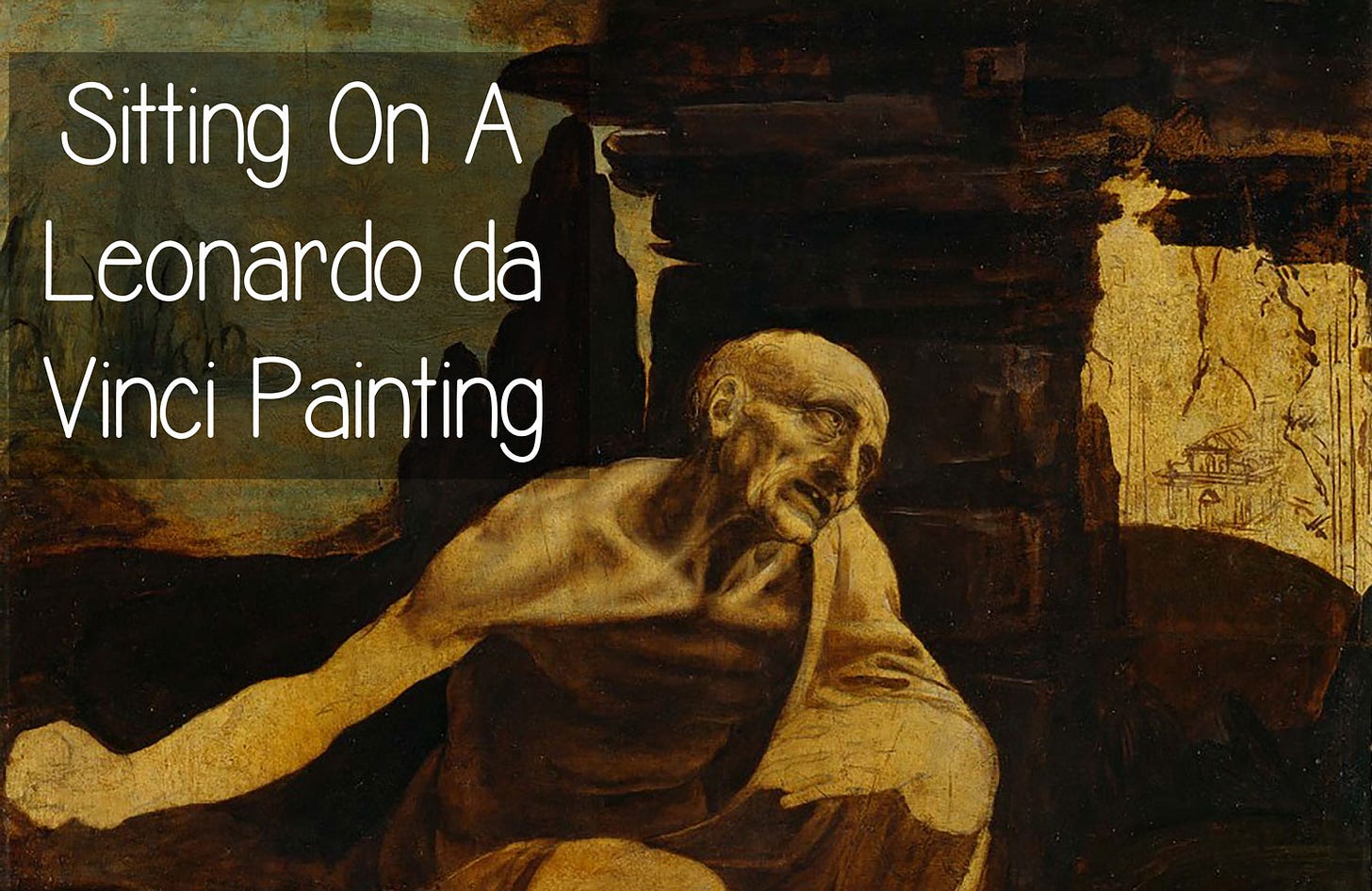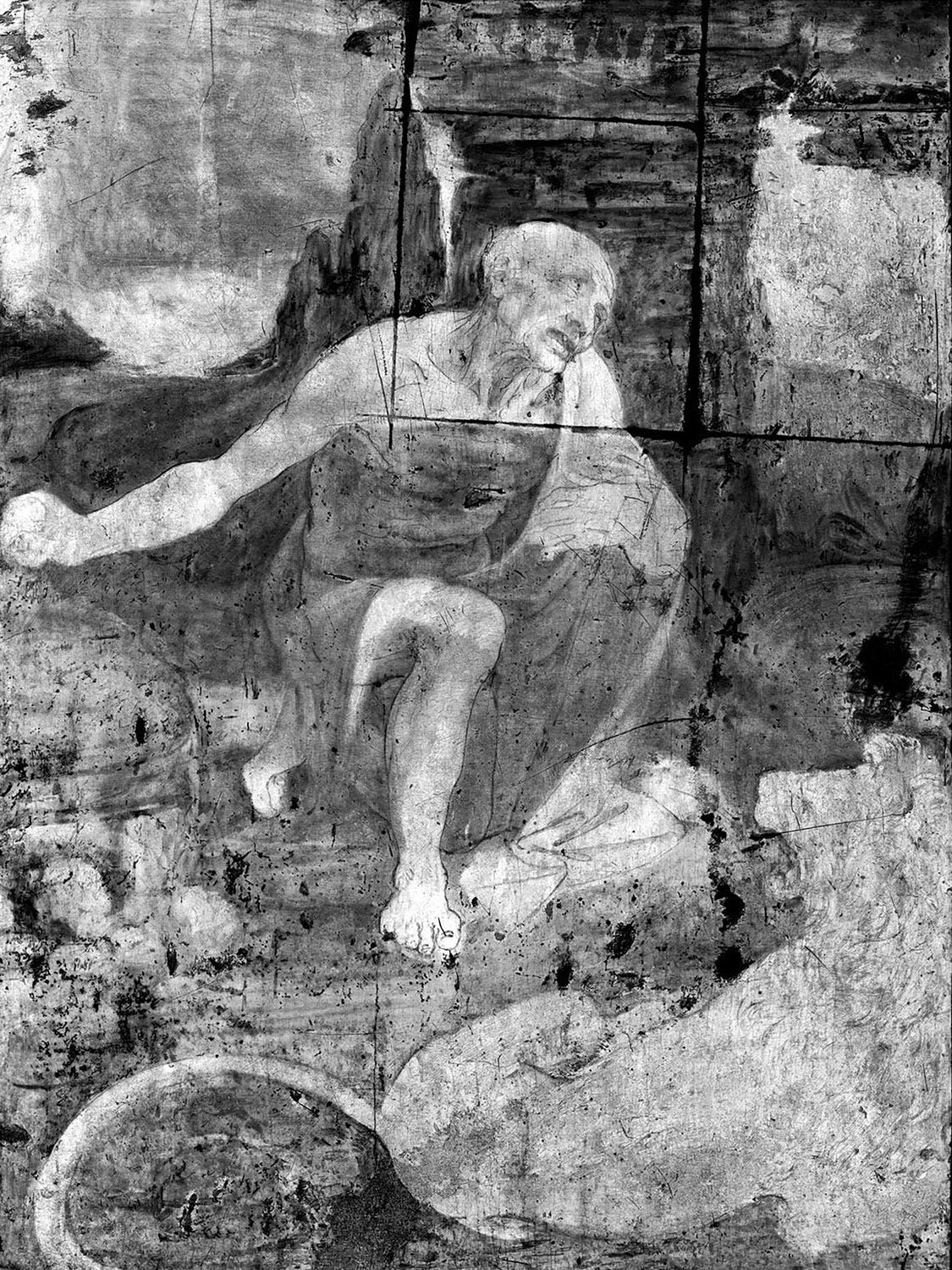Sitting On A Leonardo da Vinci Painting
Masterpiece cut in pieces yet miraculously survived
Following the story of a Vincent van Gogh painting used as a chicken coop door, a Leonardo da Vinci painting used as a stool and the lid of a chest.
To avoid confusion, yes, you can sit on a Leonardo painting as it is painted on wood—but please don't.
Leonardo never painted on canvas, only on wood panels or walls.
Here are a few more essential things to understand before telling you the story:
- Leonardo never signed paintings.
- There are only about fifteen Leonardo da Vinci paintings that survive.
- Leonardo was in the habit of leaving his paintings unfinished.
Why did Leonardo not sign his artwork?
For a straightforward reason, it is not 'art' as we understand it today when artists are free to do whatever they want.
The artist was a craftsman paid to do a job.
To illustrate that, Leonardo sent his CV to the Duke of Milan.
It is a ten-point list of skills, almost entirely about inventing war machines.
You need to get to #10 to read:
10. In time of peace I believe I can give perfect satisfaction and to the equal of any other in architecture and the composition of buildings, public and private, and in guiding water from one place to another.
I can carry out sculpture in marble, bronze, or clay, and also I can do in painting whatever may be done, as well as any other, be he who he may.
In plain English, it means that ‘by the way, I am also a pretty good painter’ is the last item on Leonardo's CV.
A man needs to eat and pay his bills.
If he was not working to help a Duke go to war, he was paid by the Church. He had to haggle about fair pay with the monks who commissioned The Virgin of the Rocks.
For the Last Supper, the monks wanted to eat warm soup, so they cut a door right in the middle for a shortcut to the kitchen.
Leonardo rarely finished his paintings
As a result, there might be unsigned, unfinished wooden panels that happen to have been painted by Leonardo that are lost to time.
Which leads us to the 1800s.
The Cardinal, the junk store, the cobbler, and the pawnshop
We are in Rome around 1820. Cardinal Fesch walks the streets. You may never have heard his name, but that will soon change.
It is not that he was Napoléons' uncle that matters for our story, but a man who was such a voracious art collector that he accumulated 16,000 paintings.
What does it mean? The Louvre has around 3,000 paintings on display. Fesch owned five times as many—five Louvre museums' worth of paintings!
So, he had a keen eye for art.
The story goes that Fesch found part of a painting used as the lid of a box at a second-hand dealer.
Years later, he discovered the other piece used as part of a stool at his cobbler's.
If the story sounds made up, use your eyes and see the infrared image below:
It is easy to see the head and top right corner had been sawn.
How does a lost Leonardo painting end up cut in pieces?
Let's do some detective work to answer the question with the first written testimonies to its story.
In 1845, a report on the sale of Fesch's collection states:
838. Leonardo da Vinci. Saint Jerome. Study painted with bitumen, only the head is a little achieved.
This painting was reunited by miracle by Cardinal Fesch, in two fragments and with an interval of several years, and was one of the most curious of the collection.
The painting was purchased but ended up in a pawnshop, and the debt was never repaid. That was when it was acquired for Pope Pius IX on the recommendation that it was:
Painted by the hand of Leonardo da Vinci and therefore extremely rare and precious.
Indeed. Then, we have an 1872 description of the Vatican Museum:
As one easily perceives, the panel had been cut in two.
Cardinal Fesch found the lower portion of the body among some old stuff, which had served as a lid for a chest.
Some years later, chance made him discover the other pieces, containing the head and the bust at his cobbler's, who had nailed them under a stool; the two portions fitted perfectly together.
Made-up story or reality?
Today, the Vatican Museum states:
According to tradition the cardinal discovered the painting divided into two parts: the lower part in the shop of a Roman second-hand dealer where it formed the cover of a box, and that with the head of the saint at the shop of his shoe-maker who had used it to make the cover of his stool.
Over and above the story, the painting can really be seen to be cut into five parts.
As illustrated in the story History Is Often Better Than Made-Up Stories, sometimes the unbelievable is true.
Remember that The Night Watchers by Rembrandt was cut off because it did not fit through the door?
No one has lost money betting on humanity's ability to do stupid things.
While it is impossible to be sure that a cobbler sat on a Leonardo da Vinci painting, what is evident is that an imbecile did cut it off.
Quite probably for a quick profit, to sell the marketable part, the head.
Now you know that when visiting the Vatican Museum, you should take the time to walk the corridors of the Pinacotaca paintings collection.
Pondering the fact that Leonardo’s Saint Jerome survived will be a nice Moment of Wonder.
Notes
The Nineteenth-Century Vicissitudes of Leonardo’s Saint Jerome; Jan Sammer 2023, Raccolta Vinciana.
https://www.academia.edu/111826359/The_Nineteenth_Century_Vicissitudes_of_Leonardo_s_Saint_Jerome
Le Cabinet de l’amateur et de l’antiquaire, revue des tableaux et des estampes anciennes, des objets d’art, d’antiquité et de curiosité. Vente de la galerie Fesch, compte-rendu; 1845.
https://gallica.bnf.fr/ark:/12148/bpt6k55508930/f156.image.r=838
Francis Wey, Rome, description et souvenirs (4e ed.) p 582
https://gallica.bnf.fr/ark:/12148/bpt6k2072668/f593.item
https://www.italianrenaissanceresources.com/units/unit-8/sub-page-03/leonardo-lists-his-skills/
https://books.google.fr/books?redir_esc=y&hl=fr&id=-zvjjQglv6EC&q=forziere#v=snippet&q
https://agorha.inha.fr/ark:/54721/34fcec63-7537-41a3-8550-a49829128dec
https://www.parismuseescollections.paris.fr/fr/musee-carnavalet/oeuvres/fesch
https://www.musee-fesch.com/peintures-du-xixeme-siecle/portrait-du-cardinal-fesch-311012







